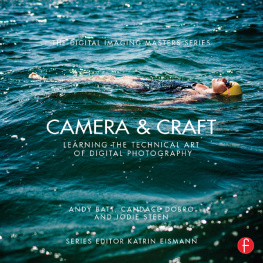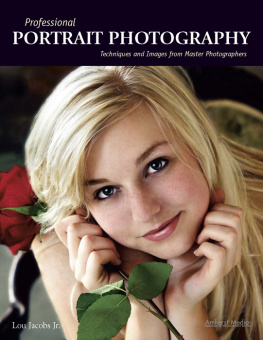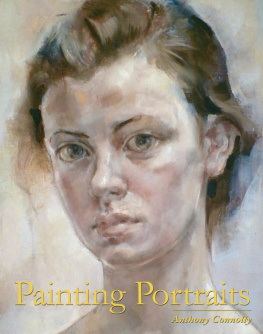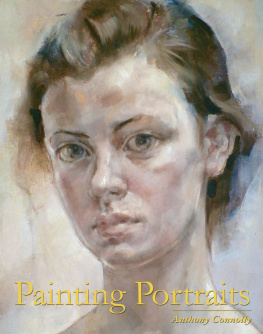Glenn Rand (glennrand.com)
Tim Meyer (meyerphoto.com)
Project Editor: Maggie Yates
Copyeditor: Cynthia Anderson, Denise J. Iest
Layout: Almute Kraus, www.exclam.de
Cover Design: Helmut Kraus, www.exclam.de
Cover Image: Tim Meyer
Printer: Everbest Printing Co. Ltd through Four Colour Print Group, Louisville, Kentucky
Printed in China
ISBN 978-1-937538-57-6
2nd Edition 2014
2014 Glenn Rand and Tim Meyer
Rocky Nook, Inc.
802 East Cota St., 3rd Floor
Santa Barbara, CA 93103
www.rockynook.com
Library of Congress Cataloging-in-Publication Data
Rand, Glenn.
The portrait : understanding portrait photography / Glenn Rand, Tim Meyer. -- 2nd edition.
pages cm
Includes bibliographical references and index.
ISBN 978-1-937538-57-6 (softcover : alk. paper)
1. Portrait photography. I. Meyer, Tim (Timothy Ignatius) II. Title.
TR575.R36 2014
778.92--dc23
2014025240
Distributed by OReilly Media
1005 Gravenstein Highway North
Sebastopol, CA 95472
All rights reserved. No part of the material protected by this copyright notice may be reproduced or utilized in any form, electronic or mechanical, including photocopying, recording, or by any information storage and retrieval system, without written permission of the publisher.
Many of the designations in this book used by manufacturers and sellers to distinguish their products are claimed as trademarks of their respective companies. Where those designations appear in this book, and Rocky Nook was aware of a trademark claim, the designations have been printed in caps or initial caps. All product names and services identified throughout this book are used in editorial fashion only and for the benefit of such companies with no intention of infringement of the trademark. They are not intended to convey endorsement or other affiliation with this book.
While reasonable care has been exercised in the preparation of this book, the publisher and author assume no responsibility for errors or omissions, or for damages resulting from the use of the information contained herein or from the use of the discs or programs that may accompany it.
This book is printed on acid-free paper.
Introduction
The most difficult thing for me is a portrait. You have to try and put your camera between the skin of a person and his shirt.
HENRI CARTIER-BRESSON
Tim Meyer
As we start this second edition, it is clear that some things in photographic technology have changed, but the core components of good portrait photography remain the same. Portrait photography is not about you, your cameras, or your lenses; it is about the subject. The most appealing aspect of portrait photography is its ability to convey to others the person captured by the portrait. The portraits great gift has always been presenting likenesses for others to recognize and remember.
Most dictionaries define a portrait as a personal likeness, particularly a painting, drawing, or photograph of the face. Using this definition as a basis to make portraits, we need to focus our abilities on creating an image that is recognizable. This simple statement summarizes the driving force behind this book and our approach to making portrait photographs as likenesses of subjects. It does not mean that we reject or will not address other concepts, but that we see portraiture as a conscious act. This differs from documentary and event photography, which try to show the situation, including the people, as they exist without being influenced by the photographer. Portraiture involves controlling setting, pose, and lighting effects.
The language of portraiture involves more than technique. The meaning of a portrait is derived from what the image communicates about the subject. The difference between a good portrait and a drivers license photo lies in what is communicated about the person in the picture. Technique provides the tools that make the communication possible. But, as with any other language, portraiture does not communicate unless the speaker (the portraitist) has something to say.
In this second edition, we once again present a complete system of portraiture and lighting, and how these ideas are used both in the studio and on location. Further, we describe how a careful analysis of the subject and their pose forms the basis of good portraiture. Our intention is not to eliminate personal style, but rather to demonstrate that style alone does not make good portraiturejust as the latest camera does not guarantee a good photograph.
For our approach to portrait photography, two areas of consideration override all others: lighting and posing. These two areas of content have been expanded in this edition. We firmly believe that the keys to successful portrait photography are how photographers control the lighting and how they work with the sitter. We will address some of the technological improvements in photography, but only to support the other portions of book.
As educators, we believe that there is more to making great images than the technical portions of the process. First, we will go into light and lighting as tools to make the images. Next, we demonstrate how the combination of the setting, the pose, and the photographers skill in relating to the sitter can lead to success as a portraitist. While we show specific examples of lighting setups, these are not unbreakable rules, but rather applications of tools that indicate potential solutions.
D. O. Hill and R. Adamson
(From the collection of David Ruderman)
We approach the technical side of portraiture with a concept called LD, or Light Dynamics. We define LD as those aspects and attributes of light that make it a useable tool to create portraits. It is the dynamics of light that give us the control to solve potential problems, whether by employing specular or diffuse light, changing the direction of light, controlling light ratios, and much more.
Further, we believe that there is much to learn from the development of portraiture through the centuries. The history of portraits includes not only the way photographers have taken portraits, but also how painters and sculptors have represented people through their media. We will briefly address the history of portrait photography to show how different approaches to portraiture recycle through time.
This will lead us to the second part of the book: working with the sitter to make the best portrait. We describe how to analyze each portrait situation in terms of the particularities of the sitter, the setting, and the potential lighting options. Topics include composition, facial analysis, relating to the subject, and finally, personal style. In both the technical and aesthetic sections of the book, we provide youthe professional, serious amateur, or studentwith the ability to make your statements through portraiture.
Often, very successful portrait photographers have developed a style or a working method that they use consistently. However, just because one photographer does great portraits with a particular approach does not necessarily mean that your needs will be met by that approach. Our intent is not to say what the style or approach to your portraiture should be, but rather to offer options and encourage you to make good portraits based on your creativity and vision. That brings us back to the central idea mentioned above: portraiture is about the interaction between people: the subject and the photographer. A successful portrait is proof that the skills of the photographer met the needs of the subject.
Next page








